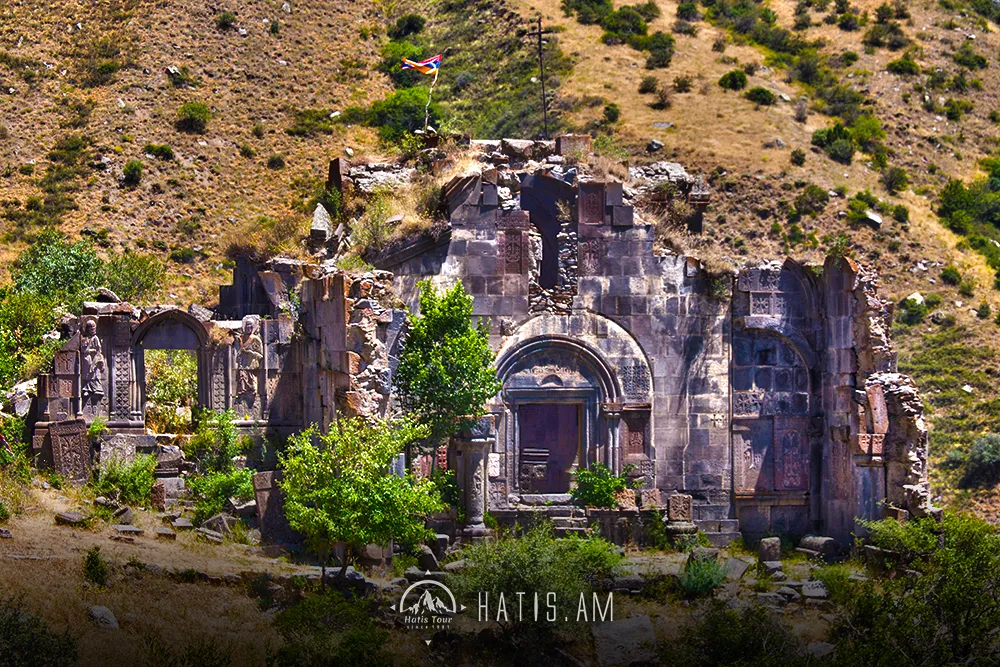.webp)
Bgheno Noravank is located in the Syunik Region of Armenia, 3-4 km east of the village of Bazhravan, on the high right bank of the Vorotan River, on a triangular shelf surrounded by wooded gorges. It is one of the medieval monastic complexes of Syunik. Accidentally discovered by the writer Axel Bakunts in 1932. According to historian Stepanos Orbelyan (XIII-XIV centuries), the main construction of the monastery was done twice. the first in 936 By Stepanos, a priest of the Sisaka dynasty, with the assistance of Prince Hrahat. The second began not much later than the first and, according to the record, ended in 1062, during the patriarchate of Prince Grigor of Syunyat and Bishop Ter Hovhan of Syunyat. Bgheno Noravank has been rebuilt many times, but it reached us in a half-destroyed state. Remains of the wall and auxiliary buildings can be seen near the monastery. According to the study, the initial structure was a small-scale monument with a rectangular plan, storage rooms protruding on the eastern side, a double-sloped roof, and wide lateral arches.


.webp)
.webp)
.webp)
.webp)
.webp)
.webp)
.webp)
.webp)
.webp)
.webp)
.webp)
.webp)
.webp)
.webp)
.webp)
.webp)
.webp)
.webp)






.webp)
.webp)
.webp)
.webp)
.webp)
.webp)

.webp)
Leave a comment